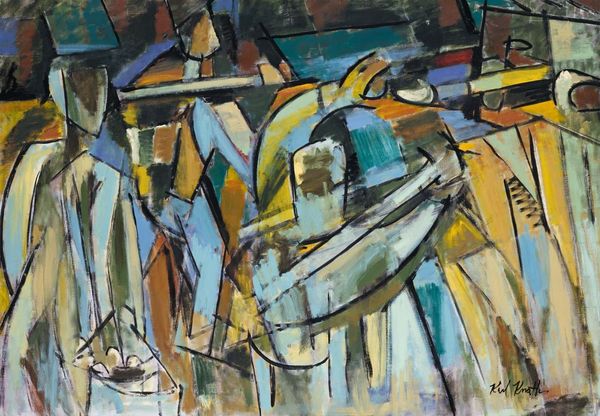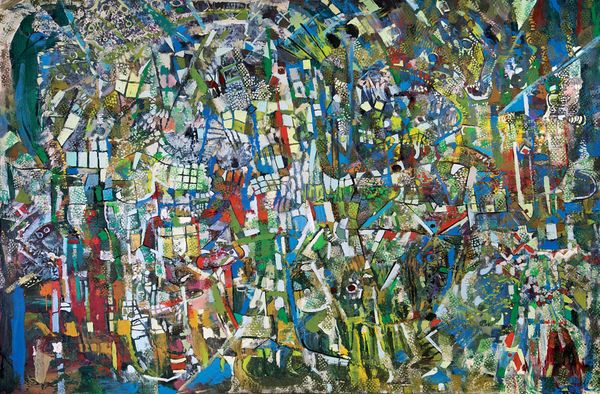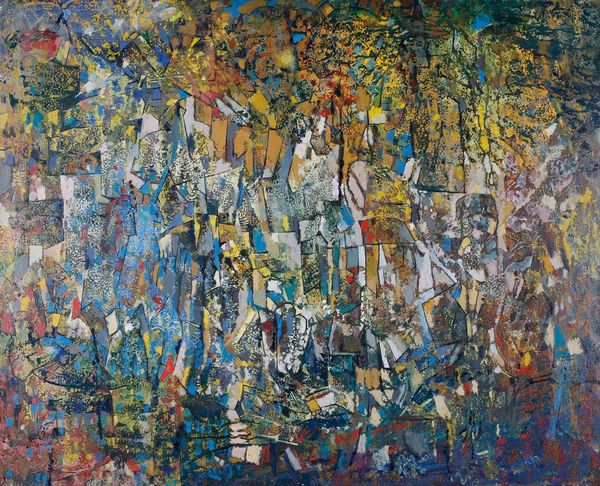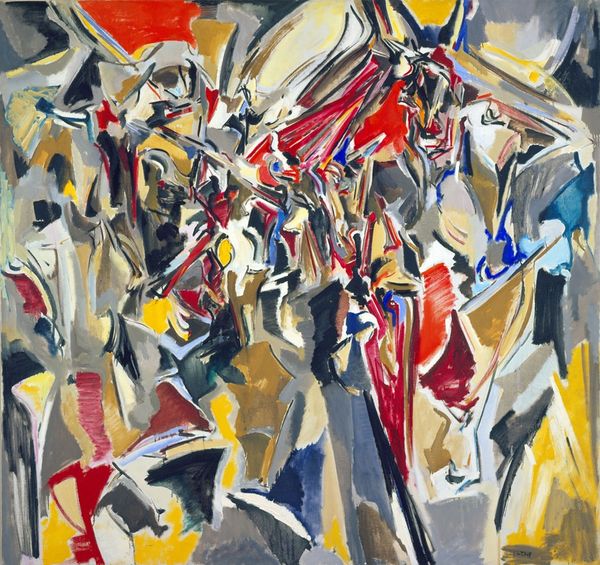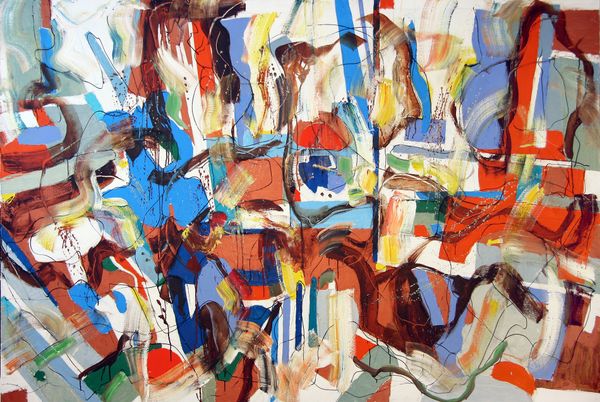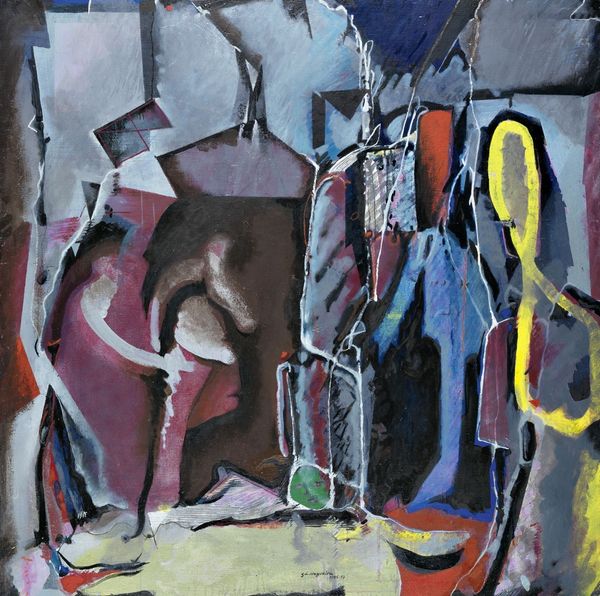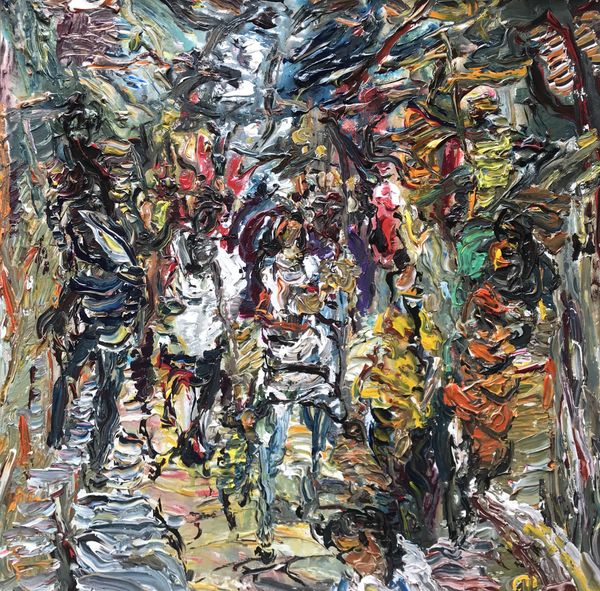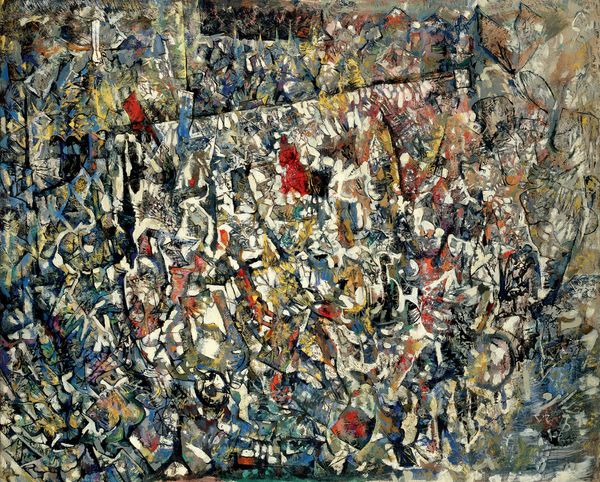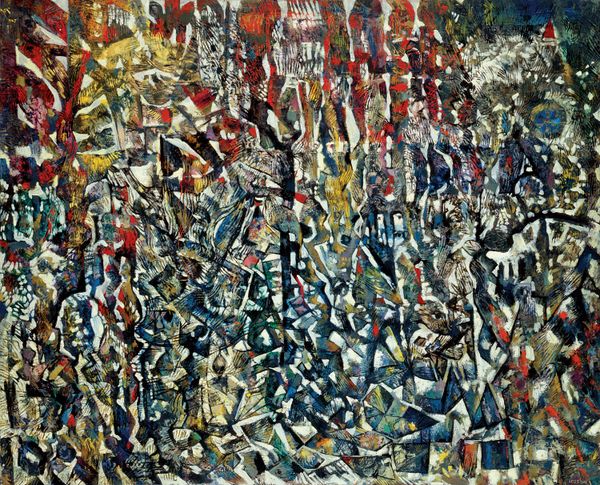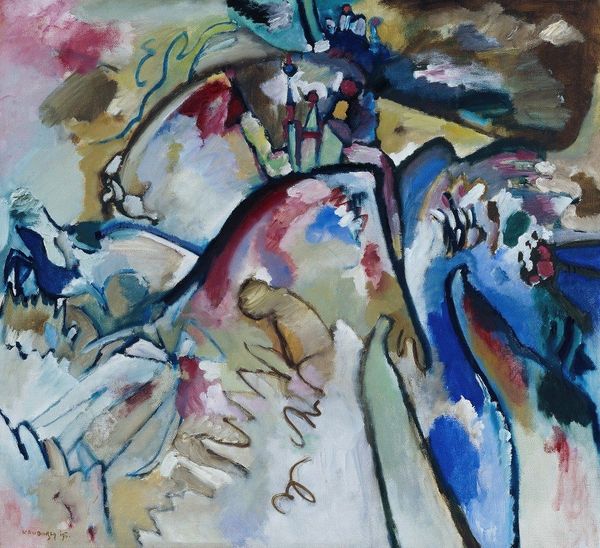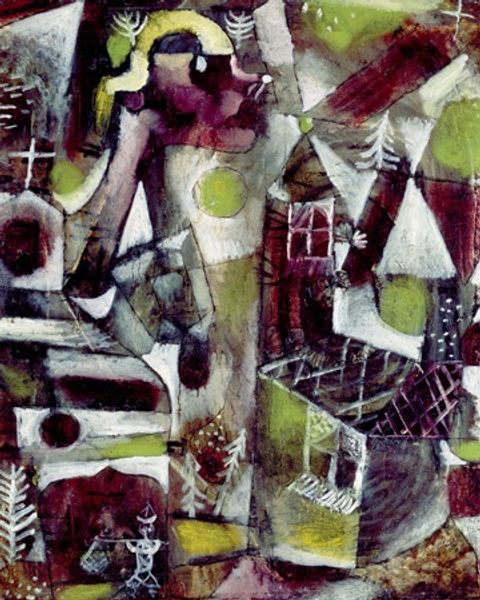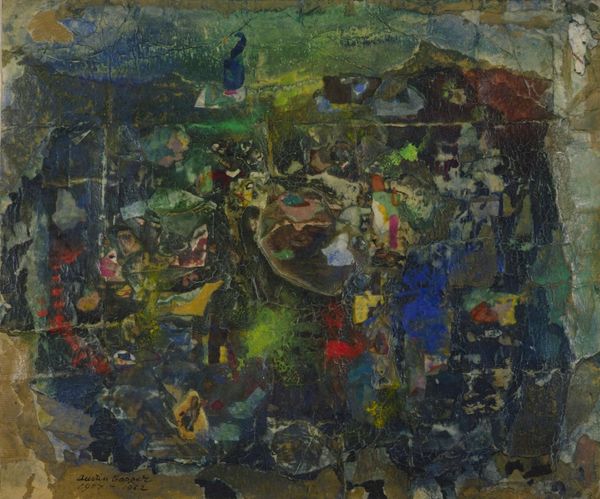
Copyright: Endre Rozsda,Fair Use
Curator: Endre Rozsda’s “Voyage de Mozart à Prague,” completed in 1958, is a striking example of abstract expressionism, executed in acrylic paint on canvas. Editor: My initial reaction? A swirling vortex of colors. It feels like looking at the inside of a kaleidoscope, energetic and chaotic, yet with a certain underlying structure struggling to emerge. Curator: Rozsda's choice of acrylic is crucial here. Acrylic paint, a relatively new medium at the time, allowed for faster drying times, enabling him to build up layers quickly and achieve this frenetic energy. Consider, too, the shift away from traditional oil painting; what does embracing a modern, mass-produced medium signify in terms of democratizing art production? Editor: I think that in 1958, with Cold War tensions mounting and the ever-present threat of nuclear war, this swirling chaos also reflects a broader cultural anxiety and disillusionment. Rozsda's work engages with themes of displacement and cultural identity. How might the “voyage” in the title relate to experiences of exile or cultural negotiation in a fractured postwar Europe? Curator: It's not simply a journey, though. Acrylic's workability, especially for layering and building textures, is interesting when related to artistic process. What considerations of underpainting, pigment load, brushstrokes, and medium-specific drying characteristics guided Rozsda in completing his painting? We should really be considering these material details when deciphering his aesthetic intention. Editor: But can't that intention, his aesthetic vision, also address larger issues such as individual struggle within broader societal conflict? Maybe Mozart's journey—a journey by someone who also lived through turmoil— serves as an echo, a testament to creativity as survival amid overwhelming darkness. To think, Rozsda himself faced challenges living under Soviet control in Hungary, further enriching this symbolic exploration of human perseverance. Curator: A valuable point about artistic intention informing broader implications. Perhaps in understanding the process, in understanding the work through the eyes and the hands that created it, the human connection becomes not only obvious, but essential to the artistic interpretation. Editor: Indeed. And through that process, through recognizing its historical backdrop and thematic concerns, the canvas speaks volumes about not only what art is, but what art can achieve as an act of defiance.
Comments
No comments
Be the first to comment and join the conversation on the ultimate creative platform.
